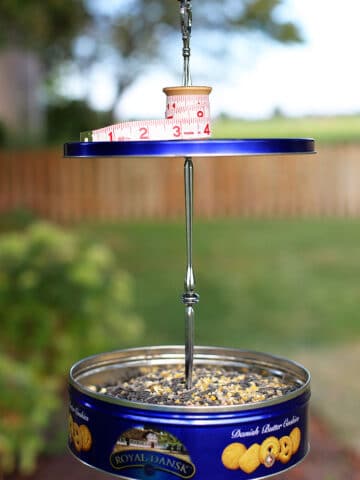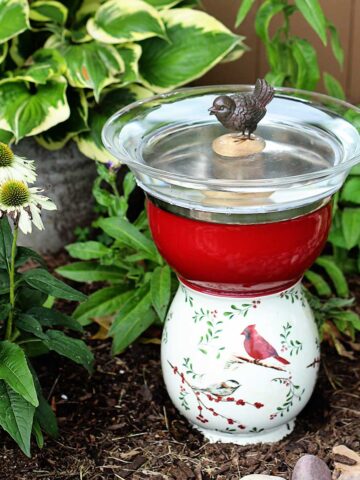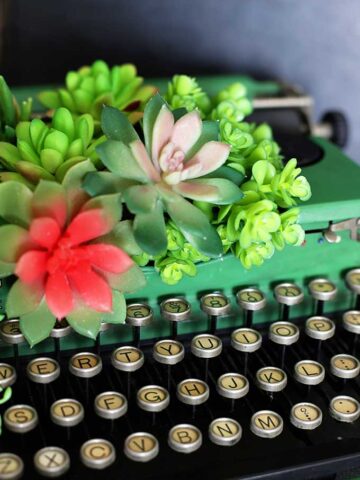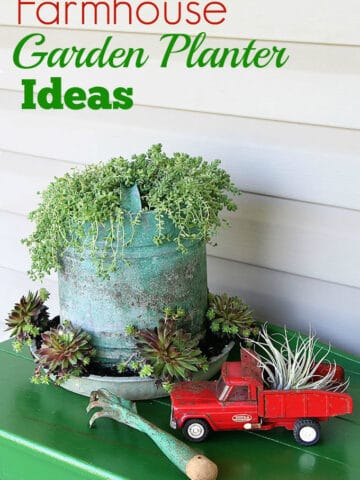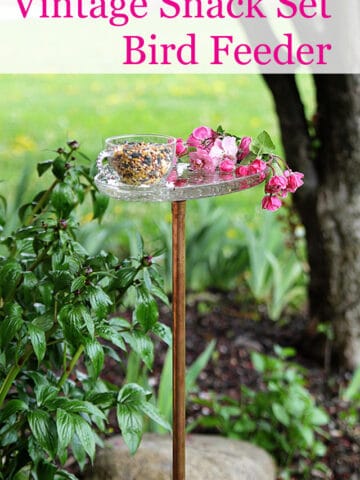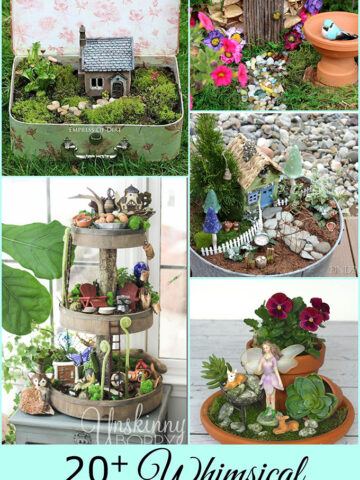Yard Art & Upcycled Garden Decor
I believe a flower garden should be a mixture of beautiful plants mixed in with a bit of unexpected whimsy. Here you will find my favorite pieces of yard art and upcycled garden decor.
A great place to start would be my 25+ Upcycled Garden Ideas along with reader favorites How To Make A Penny Bowling Ball and my DIY Wood Slice Owl.


